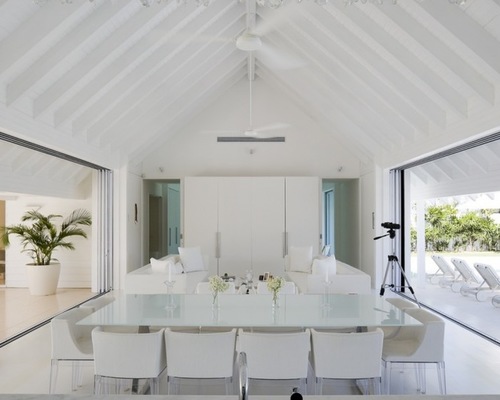Older houses had no such thing as air conditioning to switch on in summer. These old-school (and eco-friendly) design tricks were used to get air flowing through the house instead.
If you recall high school physics, you may remember that hot air rises, and that cool air moves toward warmer air. Use these two passive-cooling principles and you can design your house to make use of every breath of fresh air to stay cool and invite in the dog days of summer.
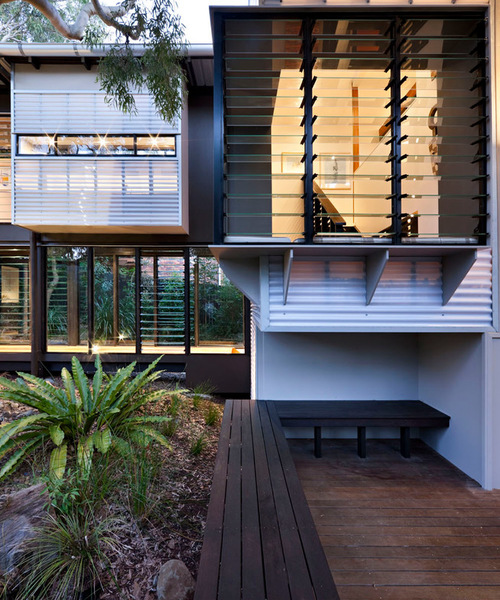

Bark Design Architects, original photo on Houzz
How to Create a Refreshing Beach-House Look
1. Use louvers to draw in air. It’s no coincidence that your favorite tropical resort often has walls of louvres. Fully open, the walls practically disappear, making the space feel truly outdoors. But when a tropical rainstorm hits, the blades can be angled down to keep the water out but still allow air to flow. If privacy is an issue, you can use blades made of frosted glass or a solid material such as wood. (Natural cedar makes a terrific feature on the exterior too.)
Forget about the vintage old rattlers from the earlier days of louvers. Modern window engineering means that the blades are securely locked into their frames, creating close to an airtight seal to keep out the winter chill.
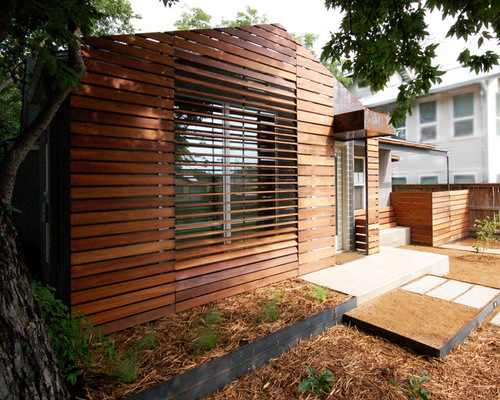

Chioco Design, original photo on Houzz
2. Make shutters more than pretty faces. For many houses, shutters are just fixed on the exterior as decoration. They can work a lot harder than that. For hundreds of years, shutters have been used to help control light and airflow. In Italian houses, the shutters are closed in the middle of the day to keep out the hottest sun — but the windows are left open to draw in air. If you have existing fixed shutters, check to see if they have gaps between the slats that can let in air. If they do, you may need to simply have the shutters reattached with hinges you can open and shut. For villas or even older bungalows, look for top-hinged shutters than can be cranked open — and secured — so that you can leave the windows open.
.jpeg)
.jpeg)
Crosson Clarke Carnachan Architects, original photo on Houzz
Find the Perfect Window Treatments on Houzz
?
3. Build screens into your architecture. For a more modern look, fixed screens as part of the design of your home can do double duty: make a statement on the design and provide security so you can leave windows open. For even more flexibility, mount some slatted screens on sliding fixtures so you can open or shut the windows and screens to protect from the breezes or provide shade.
For a more modern look, get punched-shade screens that look as good from the inside as they do from the street. With laser-cutting techniques, you can have a design that gives you the openness or privacy you need, as everything is computer-controlled for precise cutting. Think lacy and leafy, ornate Moroccan or crisp postmodern blocks. If the screen is securely fastened to the house, you can safely leave windows open to draw fresh air through on hot summer nights.
4. Open up the room. Since hot air moves toward cooler air — and any air movement is good — a house that has vented openings on both sides of the building has a lot more airflow to keep you fresh. While walls of glass that open turn rooms into virtual covered porches, you can achieve the same air movement by having operable windows on the cooler side of the house to draw the air through from the hot side.
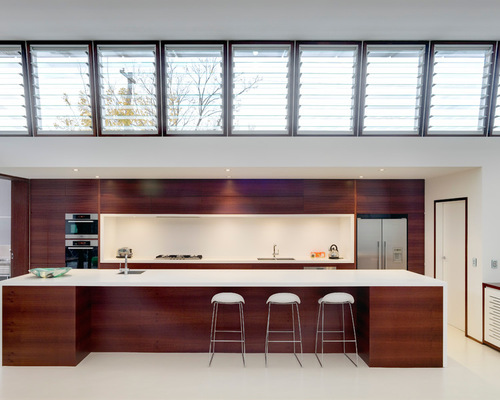

CplusC Architectural Workshop, original photo on Houzz
5. Use shutters inside too. Shutters are more than just a decorative alternative to curtains and blinds — use them as security too. Open the windows behind them to let in air and close the shutters to keep out the hot sun, and you’ve cooled the room down in the old-style, green way.
6. Aim high to vent hot air. Since hot air rises, operable high (clerestory) windows and skylights create a chimney that releases the heat out through the top of a home, helping to draw up cooler air too. If regular summer rainstorms are an issue, look for window systems with electronic sensors that cause them to close automatically when rain threatens.
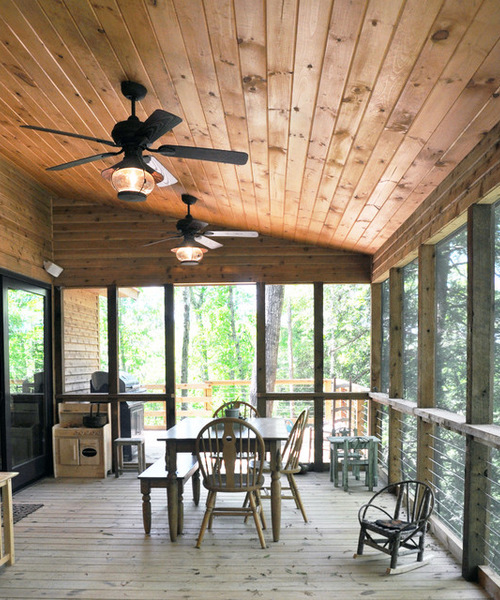

Rock Paper Hammer, original photo on Houzz
Revamp Your Beach House With New Windows
7. Embrace fans. Any air movement is good, which is why fans have been used since early times to keep things cool, hauling away the warm air and pushing cooler breezes around the room. Ceiling fans come in all sorts of designs, from statement-making to discreet. Some even look like old-school palm-leaf originals. Many have light fixtures to do double duty in the middle of the ceiling. Look for models that can be reversed for winter, helping to push warm air back down into the room. Rock Paper Hammer
8. Live outdoors — sort of. Screened porches have been a mainstay of hot and muggy regions for centuries and deserve a revival. Enclose a covered porch or veranda with insect screens (even install a fan if you need extra breezes), and you’ll have an outdoor room that is airy and bug-free. Use furniture that is sturdy enough to withstand the odd splash of rain — wood, metal, wicker, modern indoor-outdoor pieces — and you can live outside for months. Make sure you include a generous daybed so that the screened porch can become a sleeping porch on summer nights. It can be even better than “glamping.”
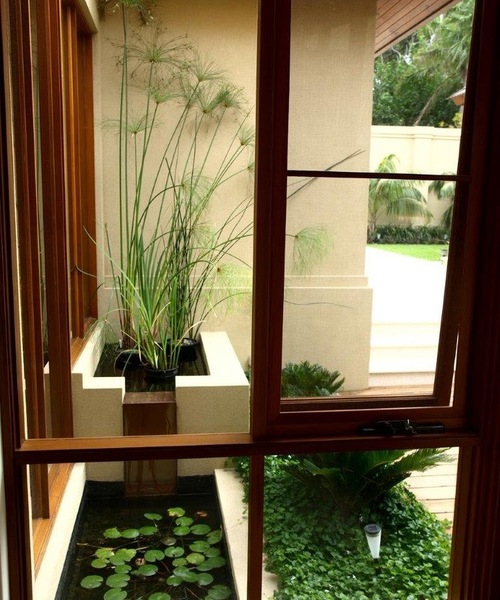

Mondo Landscapes, original photo on Houzz
9. Add cooling water. The ancients knew the power of cooling water to create the illusion of cooler air. A bubbling water pot or fountain, a small pond or a water feature helps to cool the air as it passes over — a mini version of sea breezes. Be sure to keep the water clean with appropriate plants and fish so that it does not become a breeding ground for mosquitoes.
10. Update your screen doors. Screen doors have come of age. You can buy smart designs off the shelf to complement your villa, bungalow or contemporary home, or commission an artist for the exact creative statement you want to make. A screen door means you can draw in breezes from the front and back doors without risking intruders or kids’ or pets’ escaping. And it offers a nice summer welcome to visitors. Add a mesh to keep out the flies and mosquitoes.


